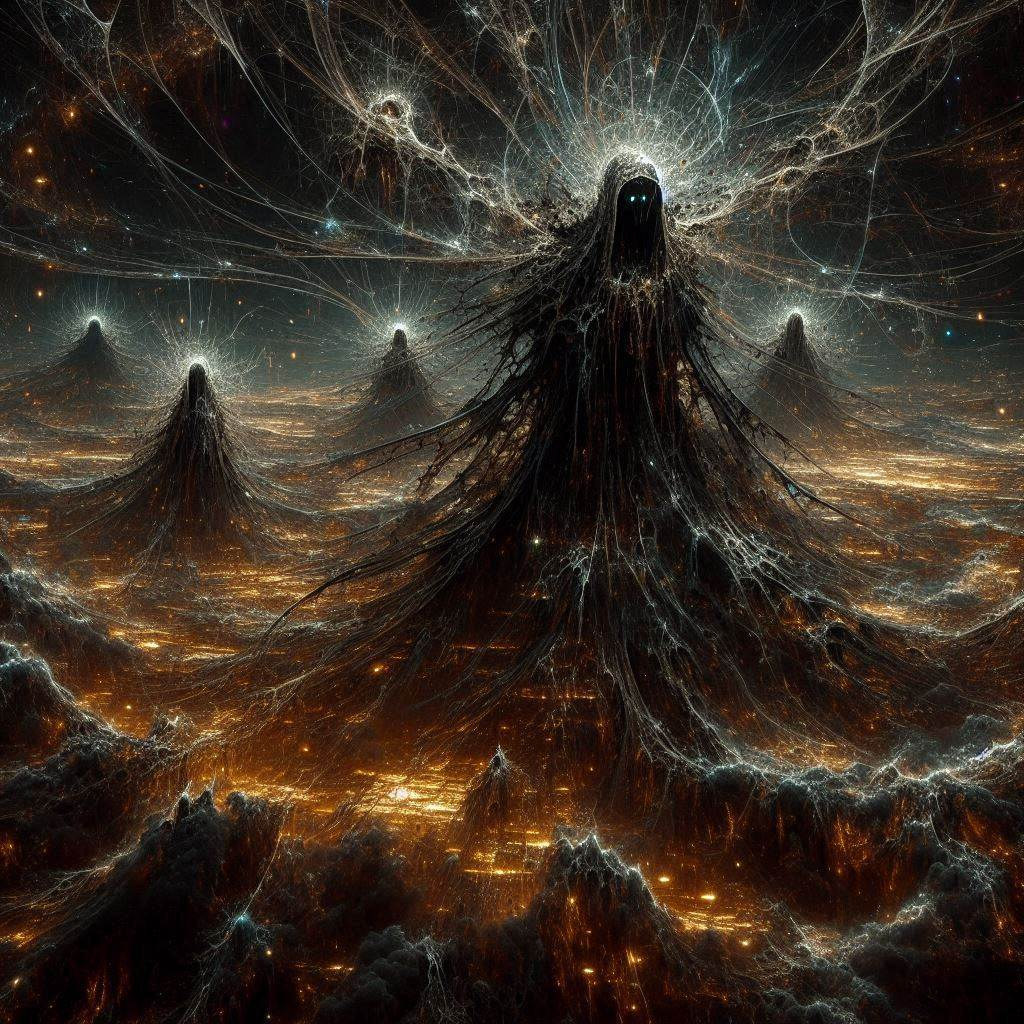Long ago, in the dense forests and rolling foothills of the Shivalik range, a society unlike any other had taken root. These hills were home to a species that had vanished from much of the world: Gigantopithecus Blackii, massive apes standing over ten feet tall, their fur thick and their minds sharp. Though their appearance was fearsome, they were a highly social and intelligent species, living in harmony with the land and its creatures.
The Gigantopithecus had domesticated the elephants of the region, not as beasts of burden in the harsh sense, but as companions and partners in shaping the landscape. These elephants, revered and well cared for, were central to the society's way of life. The Gigantopithecus used their immense strength to clear forests for agriculture, to haul massive stones for the construction of grand temples and communal complexes, and to maintain intricate irrigation systems that fed their fields.
Their villages were feats of engineering—massive stone complexes that blended into the mountainsides, connected by wide, paved roads that wound through the hills like veins. At the heart of each village was a temple, a place of reverence and reflection, where the Gigantopithecus would gather to celebrate the cycles of the seasons, honor their ancestors, and meditate on the balance between strength and gentleness that defined their lives.
One autumn, a small tribe of Neanderthals, wandering far from their usual hunting grounds, stumbled upon this society. The Neanderthals, stocky and resilient, had traveled through forests and valleys, following the game that sustained them. But the sight of the Gigantopithecus and their elephant companions left them awestruck.
The tribe had never encountered anything like this. The Gigantopithecus were unlike any creature they had seen—giants that towered over them, yet moved with a surprising grace. And the elephants, which the Neanderthals had only ever seen from a distance, were now before them, draped in intricately woven blankets, their tusks adorned with carvings and beads.
At first, the Neanderthals were wary. They watched from the cover of the trees, unsure of how to approach these beings who seemed to command the very landscape. But the Gigantopithecus, with their keen senses, soon became aware of the visitors. Rather than reacting with aggression, they extended an invitation. The leader of the Gigantopithecus, an elderly female named Kora, approached the Neanderthals with a gift: a basket of fruit and nuts, and a piece of cloth woven from plant fibers.
The Neanderthals, after some hesitation, accepted the gift. It was the beginning of a cautious but profound interaction between the two species. The Neanderthals, though less advanced in their tools and society, were quick learners. They watched as the Gigantopithecus guided their elephants to clear a new field, using simple but effective tools to turn the soil and plant crops. They saw the careful way in which the Gigantopithecus tended to the elephants, ensuring they were well-fed and healthy, and never overworked.
Over time, the Neanderthals began to help with the tasks. Though they lacked the physical strength of the Gigantopithecus, they were clever and resourceful. They found new ways to catch fish in the rivers, which they shared with their hosts, and showed the Gigantopithecus how to craft more efficient tools from stone. In return, the Gigantopithecus taught the Neanderthals about agriculture, about how to build shelters that could withstand the harsh monsoon rains, and about the importance of community.
One day, the leader of the Neanderthals, a young male named Orak, was invited to a ceremony in the central temple. The Gigantopithecus had built this temple using massive stones that their elephants had hauled from distant quarries. Inside, the air was thick with the scent of burning herbs, and the walls were adorned with carvings that told the story of their people—their origins, their bond with the elephants, and their understanding of the world around them.
As Orak sat among the Gigantopithecus, listening to their deep, resonant chants, he felt a connection to something greater than himself. It was a feeling of unity, of being part of a vast, interconnected web of life that stretched across the hills and valleys. He realized that his tribe and the Gigantopithecus were not so different—they both sought to live in harmony with the world, to protect their families, and to ensure the survival of their people.
When the ceremony ended, Kora, the leader of the Gigantopithecus, placed a carved stone in Orak’s hands. It was a symbol of their friendship, a token that represented the bond between their two peoples. Orak understood its significance, and he vowed to honor it.
The Neanderthals did not stay with the Gigantopithecus forever. As the seasons changed, they felt the call of the wild places, the need to continue their journey. But they left with knowledge and wisdom they had never known before, and a promise of friendship that would endure through the ages.
And so, in the Shivalik hills, the legacy of the Gigantopithecus and their elephants lived on, not just in the grand temples and the carefully tended fields, but in the hearts and minds of those who had been touched by their kindness, their strength, and their wisdom.





